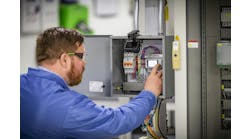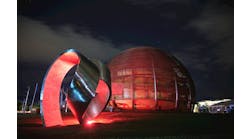An encoder is a device that creates feedback. Encoders convert motion into an electrical signal that is used by motion-control devices, such as PLCs. The encoder provides a feedback signal, which can be used for positioning, velocity or direction. Such information will be used to send a command for a specific function.
Incremental encoders are often used to measure the speed of mechanical systems. This is done for either monitoring or providing feedback for motion control. Encoder speed can be determined by counting or timing encoder output pulses. The value represents the frequency or period within which speed can be calculated. An absolute encoder delivers a unique position value at each point of rotation. It does this by employing an optical, magnetic or capacitive sensor to read a unique code from a disc that revolves with the shaft.
Also read: How to understand encoder feedback
An optical type uses a light sensor to detect whether light passes through a slit in the radial direction of a spinning disk known as a “code wheel” attached to the motor shaft. The light pulse signal fluctuates as it goes through the slit, and counting the number of pulses determines the amount of rotation of the motor shaft. When discussing optical encoders, there are two types. One type is the transmissive type. You will find this type has improved light accuracy. The other type is the reflective one. You will find this type is very thin. You can find this encoder in many applications in robotics, automated storage/retrieval systems, autonomous mobile robots, automated guided vehicles, medical equipment and chemical dosing equipment, to name just a few.
The magnetic encoder type uses a magnetic sensor to detect the fluctuating magnetic field distribution created by a magnet mounted on the motor shaft. The advantages of magnetic type encoders are that they are robust in environmental conditions. This is an encoder that outputs absolute angles. You will find magnetic encoders excel in applications requiring a large temperature range tolerance, excellent shock and vibration tolerance, robust encapsulation and contamination protection, along with output signal reliability and downtime reduction. Magnetic encoders are commonly used for position and velocity feedback in steel, pulp, paper and lumber companies.
The mechanical type senses rotational position by employing a variable resistor, the electrical resistance of which fluctuates in response to the rotation angle, to detect position. A mechanical encoder has two types: rotary and linear. The rotary type detects position by converting the angular position of the shaft. The linear type uses a scale like a ruler to detect position. These types of encoders are used to provide position, speed or direction. This encoder is used in many applications and many industries. You can find the mechanical encoder in industries such as packaging, food, beverage and textiles. Applications include motor feedback, conveying and filling.
Electromagnetic induction encoders are referred to as “resolvers.” A resolver works on the very same fundamental physical laws as an electrical transformer. Resolvers typically have a copper winding stator and a polished metal rotor. The inductive connection between the windings varies with the rotor's angular position. The resolver is energized with an alternating current signal, and the output from the transformer windings is measured to provide an electrical signal proportional to the angle. There are several kinds of resolvers: brushless, slab, pancake, receiver and differential resolvers. Resolvers have a well-established reputation for precision and reliability, and they are usually the first choice for safety-related applications. Through the use of copper windings and metal parts, resolvers are robust, heavy and expensive.
A few encoders you will find on the market are safety, wire draw, measuring wheel and inclination. The safety encoder with a safe unit can be utilized to achieve safety features specified by IEC 61800-5-2. You can utilize safety encoders in a wide selection of manufacturing. You will find safe speed monitoring has decreased damage during maintenance. Now let us look where wire draw encoders could be used. We will take a look at logistics and how goods are routinely transported across many levels. Due to this, lifts are employed and must be precisely positioned. Measuring-wheel encoders take a system's record of movement and convert them to speed or position. These encoders can detect the speed of newspapers and provide essential information on the right location for the print quality of printed images. The print quality is measured by the quality of the velocity.
Inclination sensors are used to balance and track the position of the object. These encoders take a non-contact measurement of an object's inclination angle with relation to gravity.





